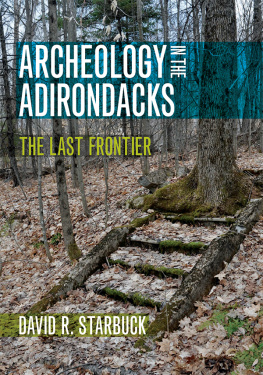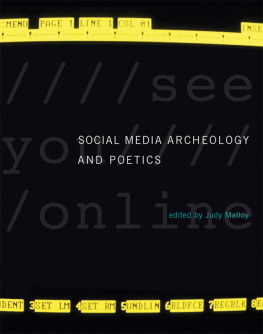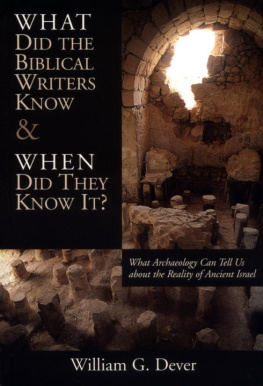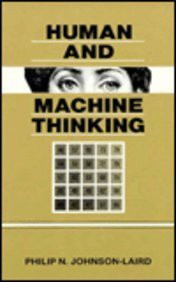Philip Dr. Johnson C. - Biblical Archeology: Important Inscriptions
Here you can read online Philip Dr. Johnson C. - Biblical Archeology: Important Inscriptions full text of the book (entire story) in english for free. Download pdf and epub, get meaning, cover and reviews about this ebook. year: 2013, publisher: Philip Communications, genre: Religion. Description of the work, (preface) as well as reviews are available. Best literature library LitArk.com created for fans of good reading and offers a wide selection of genres:
Romance novel
Science fiction
Adventure
Detective
Science
History
Home and family
Prose
Art
Politics
Computer
Non-fiction
Religion
Business
Children
Humor
Choose a favorite category and find really read worthwhile books. Enjoy immersion in the world of imagination, feel the emotions of the characters or learn something new for yourself, make an fascinating discovery.

- Book:Biblical Archeology: Important Inscriptions
- Author:
- Publisher:Philip Communications
- Genre:
- Year:2013
- Rating:3 / 5
- Favourites:Add to favourites
- Your mark:
- 60
- 1
- 2
- 3
- 4
- 5
Biblical Archeology: Important Inscriptions: summary, description and annotation
We offer to read an annotation, description, summary or preface (depends on what the author of the book "Biblical Archeology: Important Inscriptions" wrote himself). If you haven't found the necessary information about the book — write in the comments, we will try to find it.
Biblical Archeology: Important Inscriptions — read online for free the complete book (whole text) full work
Below is the text of the book, divided by pages. System saving the place of the last page read, allows you to conveniently read the book "Biblical Archeology: Important Inscriptions" online for free, without having to search again every time where you left off. Put a bookmark, and you can go to the page where you finished reading at any time.
Font size:
Interval:
Bookmark:
Biblical Archeology, Volume 4
Important Inscriptions
Dr. Johnson C. Philip
Dr. Saneesh Cherian
Editor: JW Thompson

th Revised Edition
Copyright: Creative Commons 2013
Contents
Archeology depends upon artifacts discovered from the ancient worlds for its task of reconstruction. It must never be forgotten that reconstruction is needed because in the present one know either very little, or even nothing at all, about the details of the ancient civilizations that one wishes to study. This was more so in the early stages of archeology when almost nothing was known about the ancient civilization, except what was known from the Bible or from secondary sources. However, the discovery of artifacts puts some boundaries on archeologists.
Artifacts are objects from the ancient world, but it is not always possible to interpret the purpose and role of objects. These may correspond in appearance with many things in the present world, but might have totally different purpose. Other objects might totally be different from the presently used object with which it shares something in common. The big question is, once you discover an object that may or may not look familiar, how do you interpret them. For example, if you find human and animal bones mingled in a cave, how do you interpret their interrelationship. Were the humans consumed by carnivorous animals who eventually perished in that cave, or were the animals hunted and consumed by the humans who finally died in the cave?
Or suppose a graveyard is found with scores of jars each with the skeletons of a little child. How does one interpret them. Do we interpret them as burial as part of human sacrifice? What justification can we give for such a deduction. This can also be the burial site for children who fell victims of, say smallpox. Since no flesh is preserved, all traces of smallpox, or plague or any other fatal disease, would almost be non -existent. Since children are buried in many civilizations in ways different from the way adults are buried, this is a definite possibility in times of plague.
A very interesting example from India comes to my mind. As of today I am in my early sixties. I live in a large cosmopolitan town. During my social visits, I often notice highly ornamental flower-vases displayed in rich houses, totally different from what is commonly seen. Many of them have purchased these from antique-sellers at great price, and therefore they are an object of pride as well as symbol of status in the twenty-first-century cosmopolitan families. And almost none of the children know anything about these objects of beauty other than that they are antiques. If allowed to describe, they would describe these only as antique flower-vases only. However, they would be horrified to find the truth.

A Sp ittoon The Looks Like A Flower-vase
These antiques were used by people in Kerala, India, up to the middle of the 1900s as spittoons. Chewing tobacco was common in this state. Further, the moist climate of this state created copious amounts of phlegm among those who did so. Since the people were very conscious of hygiene, they would not spit here and there. Rather they used these spittoons which were emptied at dump-sites in their own large fields.
Further, metal-working [or any kind of handicraft] had risen to very high levels of perfection in this state, and as a consequence even the humble spittoon was highly symmetrical and ornate. However, just five decade after their used dropped from common life, the new generation discovered them in their attics or from antique-shops and began giving them the most honored position in their living-rooms, mainly because the shape and size corresponds today to objects used for purposes totally different from what it was originally meant for. Only a person who has seen them in use would be able to fully enlighten people as to what the se are.
Thus almost all major archeological finds can be interpreted in more than one way, and there needs to be something better than mere informed conjecture to cross-check the information with. And here comes the importance of inscriptions. The only objective solution is for someone from that culture to come and explain their culture, customs, philosophies, aspirations, and artifacts to us. This looks impossible, but precisely this has happened through inscriptions, clay/stone tablets, and other kinds of written documents.
The Importance Of Written Documents : A person contemporary with a society, and an integral part of it, is the best one to tell us the story of that civilization. No amount of deduction and speculation by people removed several millennia from him can be as accurate or as authentic as his statement.
Except for the twentieth century, writing material has never been as abundant in any other time in human history. Even in the twenty-first century, paper is not easily accessible to a large segment of population. Thus thinking of writings and inscriptions in civilizations four to six thousand years in the past looks ridiculous. Yet man has been a compulsive writer. In spite of the difficulty in getting materials, and in spite of the difficulty in the process of writing, people of the ancient civilizations have left such a vast collection of written material that it is impossible even to read and study all of them.
Written material from the past was discovered by many even in ancient times, but none had any clue as to what it meant, so they simply ignored such material. Many of the ancient statues, temples, and other such buildings also had inscriptions, but for most people [and even for scientists] they were more of a curiosity than something of lasting value. So much so that even in 1800s and 1900s people actively working in the fields of archeology and professional archeological societies kept ignoring inscriptions. Consequently, in 1700s and 1800s many smaller inscriptions were simply thrown away by archeologists who discovered them. Larger inscriptions and manuscripts were stored in museums as things of lesser value, and little specific attention was paid to them. One reason was that none knew how to read them, and the task of deciphering them did not look sufficiently rewarding to many. And all this set archeological progress back by centuries.
It was only in the late 1800s and early 1900s that few individuals recognized the importance of written material for archeology. However all of them were faced with the task of deciphering the unknown scripts, languages which were not spoken for 2500 to 3000 years or more from the present era. Obviously, no living or dead person for the last two to three millennia had any idea of how these languages were read. Yet, as an increasing number of scholars and amateurs realized the importance of inscriptions, they kept working on deciphering the ancient languages.
Eventually there were many breakthroughs. Painstaking work from 10 to 25 years helped them to crack one language, and then another. Eventually a good number of languages spoken in Bible lands became accessible to scholars worldwide. This resulted in a large volume of translated material that in turn helped scholars and researchers to reconstruct history, sociology, laws, customs, and numerous other things about the ancient world.
Certain key finds helped in deciphering the ancient languages of the Biblical lands. Certain other key finds helped in understanding the basic chronology, geography, and interrelationship of many of these cultures. All of these put together gave researchers the tools needed to reconstruct the past. Of such discoveries, the most important writings are briefly listed below. Detailed information about each of these discoveries is given separately.
Next pageFont size:
Interval:
Bookmark:
Similar books «Biblical Archeology: Important Inscriptions»
Look at similar books to Biblical Archeology: Important Inscriptions. We have selected literature similar in name and meaning in the hope of providing readers with more options to find new, interesting, not yet read works.
Discussion, reviews of the book Biblical Archeology: Important Inscriptions and just readers' own opinions. Leave your comments, write what you think about the work, its meaning or the main characters. Specify what exactly you liked and what you didn't like, and why you think so.






